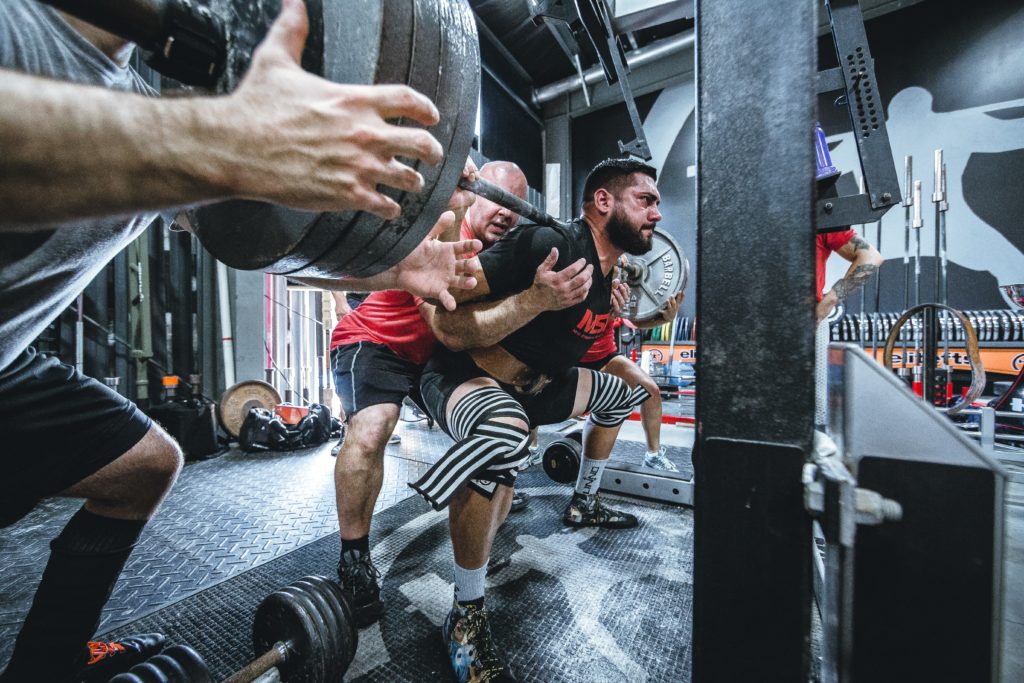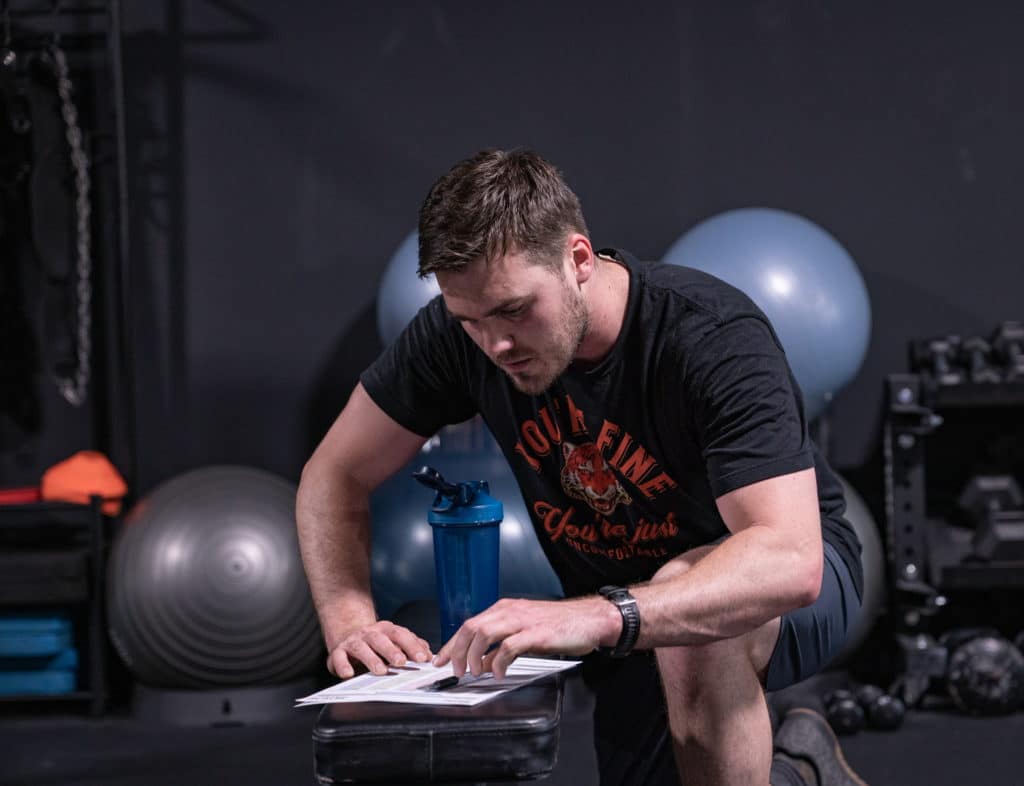I started lifting weights when I was 12 years old. Initially, my brother took me along with him to work out at a gym in Bellefonte, Pennsylvania. Soon after, I hit the Juniata Valley YMCA with my middle school buddies. We’d scour the muscle magazines for the next program that guaranteed us bigger, stronger muscles. And I needed those suckers. There were fools to tackle on the football field, and there were chicks to impress in homeroom. What the muscle magazines don’t tell 12-year-old boys is that pre-pubescent testosterone levels aren’t enough to stack on muscle like the fellas in the magazines. They also don’t tell you that the big, veiny bastards in the magazines inject a teste-shriveling cocktail of pharmaceutical enhancement.

What they did offer, though, were a lot of programs based on percentages of a lifter’s one-rep max on a given lift. So, magazine in hand, we’d set our one-rep max on the bench press, the deadlift, and the squat. Then, with admirable levels of adolescent hope, we’d hit the gym, strictly following the percentage prescriptions of that month’s program. This went on for years. We should have learned faster that exact percentage prescriptions don’t work. But boys of that age have impressively thick skulls.
A week or two into each program, we’d realize that we couldn’t keep up with the percentages. Try as we might, it seemed our strength failed us. We blamed it on ourselves, figuring we just needed to work harder. Once we got stronger, the percentage programs would work. False.
What we didn’t realize is that a one-rep max is a snapshot in time based on your abilities on a given day. And physiology is always in flux. Some days we have all the smoke. Other days we’re behind the curve. Those percentage-based programs didn’t account for the reality of human physiology. Even if we nailed every aspect of recovery, which no adolescent boy ever does, we would not have kept up with the increases in volume and intensity. Since max output fluctuates from day to day, we needed a system for managing training intensity that accounts for fluctuations.
I didn’t find that system until I became a strength and conditioning coach. But now, we use two tools to make sure we are training with the right weights and conditioning with the correct intensity. Those tools are Reps in Reserve (RIR) and Rating of Perceived Exertion (RPE). Each is a relative rating of intensity. That means each accounts for the fluctuations in your training readiness so that you can train in a way that makes sense for your body on a given day.
We’ll walk through a description of each tool and then further describe how we apply it in the Beyond Strength training system.
Reps in Reserve (RIR)
Have you ever done a set and thought, “Man, I could have done more.” Well, then, you had reps in reserve. It means that you used a weight that didn’t push you to your absolute max with the number of reps you completed. And that’s a good thing; you should leave reps in reserve at the end of nearly all your training sets. It’s a simple way to manage intensity so that you use weights that don’t overtax your body and allow you to recover from a training session.
Here’s another way to think about it. Say that your program calls for sets of 5 reps with 2 to 3 reps in reserve. That means you’ll choose a weight that you could do for 7 to 8 reps, but only complete 5 reps with that weight.
At Beyond Strength, all our strength training sets and reps are guided by RIR. We use RIR because, well, it’s really dang simple. It works because it’s relative. Rather than strictly prescribing a weight, it offers wiggle room to account for your max capacity on a given day. Beside each volume prescription (sets and reps), you’ll see RIR followed by a number or number range. That’s your guide for weight selection.
Now, you might be thinking, “How do I know how many reps in reserve I have?” It’s a trial-and-error process that you build into a skill. The process starts during your warmup sets. You grab some relatively light weights and do some sets of the exercise you’ll be training. You’ll increase the weight slightly from warmup set to warmup set. While you do this, you note how each weight feels and how many more reps you believe could have done with it. Then you choose your first working weight. After your first working set, you ask yourself how many more reps you could have done with that weight and compare your answer to the prescribed RIR. If you nailed it, you stick with that weight. If you overshot, or undershot, your strength for the day, you go down or up in weight.

Once you’ve completed the first week of a training program, RIR gets easier because you can reference the weights you used the previous week for the prescribed sets and reps. That weight is your initial aiming point for determining the weight you’ll use during the present training session.
RIR is our tool for setting intensity during for strength training. We use RPE a little differently.
Rating of Perceived Exertion (RPE)
RPE asks, “How hard did that feel on a scale from 1 to 10?” Ten is the absolute max amount of effort you could expend. One is the least amount of effort. Let’s use running as an example.
We’ll say your coach prescribe for you to run at a 5 RPE for 30 minutes. That means you’d run at about half as hard as your capable of running for 30 minutes. It’s not rocket surgery, folks.
At Beyond Strength, we use RPE in a few different ways: to set the overall intensity for a training session, to set the intensity for how hard we’ll work during a conditioning session, and for weight selection during power training.
While we use RIR to choose weights for a given set, RPE guides how we should feel by the end of a training session. Most sessions fall in the 7 to 8 RPE range—difficult but not soul crushing. It means that at the end of the session you feel like you worked, but you still have a good amount of energy left over. A 9 or 10 RPE would mean that you worked just about as hard as possible during the session, vice versa if we go down the scale.
Applying RPE to a training session dials in the ebb and flow of your training intensity throughout the week. If each session is an 8 RPE or above, you’re going to shit can yourself. If every session is below a 7 RPE, you’re not training hard enough. We need a balance of hard, moderate, and easy to maintain training consistency while giving our bodies enough training stress to get results.
RPE for conditioning is as I described it in the running example. You work based on a rating between your max effort and your easiest effort. This is a great backup system for heart rate-based training because sometimes your heart rate stays down even when you push hard if you’re behind the recovery curve. For example, the prescription might be to work within a heart rate range of 130 to 140. But on a given day 130 or 140 might be a higher percentage of your max heart rate than it was the day before. RPE offers a check that keeps us from giving our bodies too much conditioning intensity.
RPE for power is a little different than each of the others. It helps us select weights based on how hard it feels to move the weight. This makes more sense for power training than RIR because we don’t push power training close to failure. We typically use RPE ratings of 6 and 7 for power training. A 6 means that you could move that weight very fast, very easily. A 7 means that you could move the weight fast with maximal effort and intent. This application works well for medicine ball throws and jumps, loaded and unloaded, aka the bulk of our power training. (For an unloaded jump, the RPE tells you how hard you should jump.)
RIR and RPE: Two Great Intensity Tools
Capacity fluctuates from day to day. RIR and RPE help us account for fluctuations and ensure we’re training at the right intensity during our strength and conditioning sessions. Thank the sweet Lord, it didn’t take you as long to learn about it as it took me.
You might also like:
- THE MOST IMPORTANT FITNESS VARIABLES: CONSISTENCY AND CONTINUITY
- EUSTRESS TRAINING: HOW TO LIFT WEIGHTS AND MANAGE STRESS AT THE SAME TIME
- EXERCISES FOR BUILDING REAL-WORLD STRENGTH
- RUCKING: A GREAT TOOL FOR DEALING WITH DISCOMFORT
- HOW I LOST WEIGHT (IT’S NOT WHAT YOU THINK)
- VO2 MAX INTERVALS: INTENSE TRAINING THAT ISN’T STUPID
- YESTERDAY DON’T MEAN SH*T
- WHY YOUR HEART RATE JUMPS DURING PLYOS
- WANT TO MAKE PROGRESS? PUT SOMETHING HARD ON THE CALENDAR
- STRENGTH LOVES REST: WHY YOU NEED LONGER REST PERIODS TO BUILD STRENGTH
- HOW TO RECOVER FROM YOUR WORKOUTS
- MORPHEUS HEART RATE TRAINING: WHAT IT IS, WHY WE USE IT, AND HOW YOU CAN GET THE MOST OUT OF IT
- START NOW: WHY WAITING FOR THE PERFECT TIME IS THE WORST THING TO DO
- HOW (AND WHY) OUR YEAR-LONG TRAINING PLAN WORKS
- TIPS FOR COMPETING WITH YOURSELF IN THE GYM
